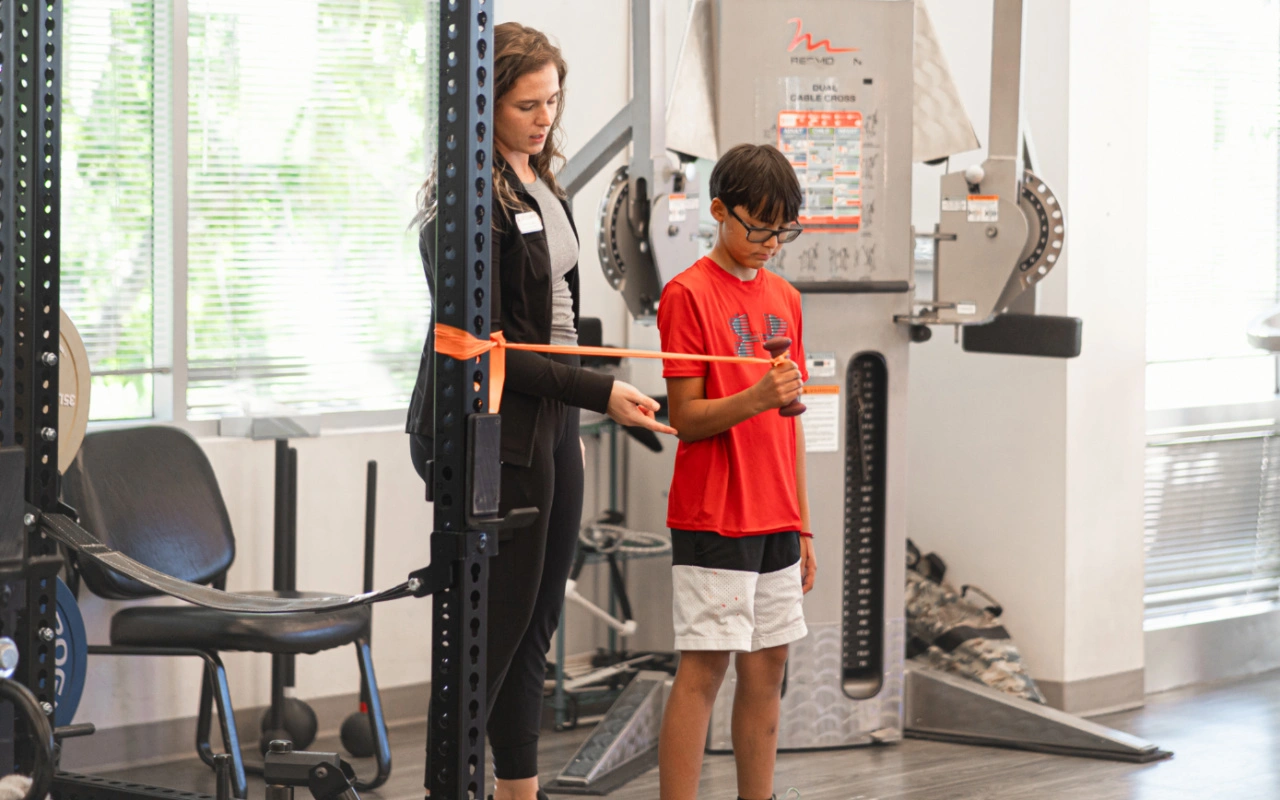A growth plate is a soft portion of the bone, usually located at either end of the bone, and it helps bones form and grow. Your growth plates, like your bones, can be attached to tissues and tendons to help your body move throughout space.
When a muscle is connected to a growth plate, it is called an apophysis, and there are many apophyses throughout the body. When there is inflammation at an apophysis, apophysitis is occurring.
Inflammation can be a broad term, but apophysitis typically reflects a stress or a strain at the growth plate. It’s typically marked with sharp pain, and it occurs in growing children. While there are many different types of apophysitises in the upper and lower body, the main upper extremity apophysitis is commonly known as Little League Elbow.
Read more about lower body apophysities in “Lower Extremity Apophysities in Children” on the Spooner Blog.
What is Little League Elbow?
Little League Elbow is formally known as medial epicondyle apophysitis. Its symptoms include irritation and inflammation at the growth plate of the medial epicondyle, which is the inner bony process of your elbow- which is closest to your body.
This is extremely common in young baseball players- most specifically pitchers. The growth plate commonly opens around age 6 and closes anywhere between ages 14 and 17, so Little League Elbow can occur anytime in this age range.
Kids who experience Little League Elbow will have a lot of pain at the inner portion of the elbow, and they might experience swelling in that area as well. Pain might be exacerbated when they are pitching or throwing. If the apophysitis is super flared up, the child might be in pain at all times, but the mechanics of throwing will feel worse.
Any overhead athlete- not just baseball players- can get Little League Elbow. Tennis players, pickleballers, golfers, and more are at risk.
Little League Elbow happens because there are so many stabilizing ligaments and muscles within the medial epicondyle that are required for a throwing movement. When you are a kid, and your growth plate is still open, those muscles and ligaments are a lot stronger than the growth plate itself. So, when you are repeating the same throwing motion over and over again, it can cause that growth plate to be irritated and inflamed. In some extreme cases, the plate can become completely separated from the elbow.
Treating Little League Elbow
As we know, kids are incredibly resilient and have tendencies to push through the pain. If your child is a baseball player, specifically, follow a pitch count limit- which varies on age and athlete level. This lets you know a safe range of pitches and throws your child can perform in a day, inning, or game, as well as how many rest days they will need. Playing through pain can lead to worse injuries, so be sure to look out for any injury, stress, or overuse your child might be pushing through.
If your child does develop Little League Elbow, rest is incredibly important to treat Little League Elbow- and we know that no child wants to be taken off the field. However, a few weeks of rest can help lessen the inflammation and irritation happening in the elbow.
After that period of rest, Spooner hand therapists like to take a step away from the elbow itself and address the body as whole. This means we look at the position and function of the child’s core, trunk, shoulders, and even their feet to identify any issues that are originating there. Everything in our bodies is connected, so it is vital to get the whole body approach. We can identify any issues that are going on at different parts of the body that could be causing the elbow to function improperly during that overhead motion.
Then, we fix those issues in combination with strengthening at the elbow and working on the stabilizing structures of the elbow. From here, we put together a return to throwing program so they can return to sport stronger.
If your athlete is struggling with elbow pain, schedule an appointment with a Spooner hand therapist today!

